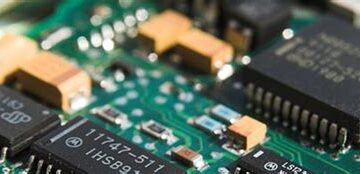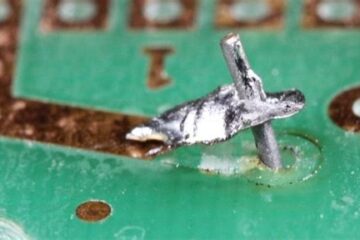Introduction to Traceability Standard
In today’s globalized and complex supply chain, the risk of counterfeit components entering the market has increased significantly. Counterfeit components pose serious threats to the reliability, safety, and performance of electronic products. To address this issue, the electronics industry has developed various standards and guidelines to ensure the authenticity and traceability of components. One such standard is the IPC-1782, which provides a comprehensive framework for traceability to support the fight against counterfeit components.
What is IPC-1782?
IPC-1782 is a standard developed by the Association Connecting Electronics Industries (IPC) to establish requirements for a traceability system that helps in the detection and prevention of counterfeit components. The standard defines the minimum requirements for a traceability system that enables the tracking of components from the point of manufacture to the point of use. It provides guidance on the implementation of a traceability system, including the identification of critical data elements, the use of unique identifiers, and the management of traceability data.
Importance of Traceability in Preventing Counterfeit Components
Traceability is a critical factor in preventing the infiltration of counterfeit components into the supply chain. By establishing a robust traceability system, organizations can:
- Verify the authenticity of components
- Identify the source of components
- Track the movement of components through the supply chain
- Detect and prevent the entry of counterfeit components
- Facilitate the recall of suspect or confirmed counterfeit components
Traceability also helps in the investigation and resolution of issues related to counterfeit components, such as identifying the source of the problem and taking corrective actions to prevent future occurrences.
Key Elements of IPC-1782
The IPC-1782 standard defines several key elements that are essential for establishing an effective traceability system. These elements include:
Unique Identification
One of the core requirements of IPC-1782 is the use of unique identifiers for components. Each component must be assigned a unique identifier that distinguishes it from other components. The unique identifier should be permanently marked on the component or its packaging and should be machine-readable, such as a barcode or RFID tag. The unique identifier should also be linked to the traceability data associated with the component.
Critical Data Elements
IPC-1782 defines a set of critical data elements that must be captured and maintained as part of the traceability system. These data elements include:
- Manufacturer name and location
- Part number and description
- Date of manufacture
- Lot or batch number
- Serial number (if applicable)
- Certifications and test reports
- Shipping and receiving information
The critical data elements provide the necessary information to track the origin, movement, and authenticity of components throughout the supply chain.
Data Management
Effective data management is crucial for the success of a traceability system. IPC-1782 provides guidance on the management of traceability data, including:
- Data collection and recording
- Data storage and retention
- Data sharing and exchange
- Data security and access control
Organizations must establish processes and systems to ensure the accuracy, completeness, and integrity of traceability data. They should also define policies for data retention and establish secure methods for sharing traceability data with authorized parties.
Supply Chain Collaboration
Traceability is a collaborative effort that requires the participation of all stakeholders in the supply chain. IPC-1782 emphasizes the importance of supply chain collaboration in implementing and maintaining a traceability system. This includes:
- Establishing agreements and protocols for data sharing
- Defining roles and responsibilities of each party
- Conducting joint training and awareness programs
- Performing regular audits and assessments
Supply chain collaboration helps to ensure the consistency and effectiveness of the traceability system across the entire supply chain.
Implementing IPC-1782
Implementing IPC-1782 requires a structured approach that involves several key steps:
Gap Analysis
The first step in implementing IPC-1782 is to conduct a gap analysis to assess the current state of the organization’s traceability system. This involves comparing the existing processes, systems, and data against the requirements of IPC-1782. The gap analysis helps to identify areas that need improvement and prioritize the implementation efforts.
Traceability Plan
Based on the gap analysis, organizations should develop a detailed traceability plan that outlines the steps for implementing IPC-1782. The plan should include:
- Objectives and scope of the traceability system
- Identification of critical data elements
- Selection of unique identification methods
- Definition of data management processes
- Establishment of supply chain collaboration agreements
- Training and awareness programs
- Implementation timeline and milestones
The traceability plan serves as a roadmap for the implementation of IPC-1782 and helps to ensure a structured and coordinated approach.
Pilot Implementation
Before implementing IPC-1782 across the entire organization, it is recommended to conduct a pilot implementation. The pilot implementation involves selecting a specific product line or supply chain segment to test the traceability system. The pilot implementation helps to identify any issues or challenges and allows for refining the processes and systems before full-scale implementation.
Full-Scale Implementation
After successful pilot implementation, organizations can proceed with the full-scale implementation of IPC-1782. This involves rolling out the traceability system across all relevant product lines and supply chain segments. Full-scale implementation requires the participation and collaboration of all stakeholders, including suppliers, manufacturers, distributors, and customers.
Continuous Improvement
Implementing IPC-1782 is not a one-time effort but a continuous process of improvement. Organizations should regularly review and assess the effectiveness of their traceability system and make necessary adjustments based on the findings. This includes:
- Monitoring the performance of the traceability system
- Conducting regular audits and assessments
- Analyzing traceability data to identify trends and issues
- Updating processes and systems based on industry best practices and technological advancements
Continuous improvement ensures that the traceability system remains effective and relevant in preventing counterfeit components.

Benefits of Implementing IPC-1782
Implementing IPC-1782 offers several benefits to organizations in the electronics industry:
- Enhanced supply chain visibility and transparency
- Improved ability to detect and prevent counterfeit components
- Reduced risk of product failures and recalls due to counterfeit components
- Increased customer confidence and trust in the authenticity of products
- Compliance with industry regulations and standards
- Streamlined processes for handling suspect or confirmed counterfeit components
- Improved collaboration and communication among supply chain partners
By adopting IPC-1782, organizations can strengthen their supply chain integrity and protect themselves and their customers from the risks associated with counterfeit components.
Challenges and Considerations
While implementing IPC-1782 offers significant benefits, organizations may face certain challenges and considerations:
- Cost of implementation: Implementing a traceability system requires investment in technology, processes, and training.
- Complexity of the supply chain: The complexity of the supply chain, especially in global operations, can make it challenging to establish end-to-end traceability.
- Data management and security: Managing large volumes of traceability data and ensuring its security and integrity can be complex.
- Supplier engagement: Ensuring supplier participation and compliance with traceability requirements can be challenging, especially for smaller suppliers.
- Compatibility with existing systems: Integrating the traceability system with existing enterprise systems and processes may require significant effort.
Organizations should carefully assess these challenges and develop strategies to address them effectively.
Conclusion
IPC-1782 is a critical standard for establishing traceability in the electronics industry to combat the proliferation of counterfeit components. By implementing IPC-1782, organizations can establish a robust traceability system that enables the tracking of components from the point of manufacture to the point of use. The standard provides guidance on unique identification, critical data elements, data management, and supply chain collaboration.
Implementing IPC-1782 requires a structured approach that involves gap analysis, traceability planning, pilot implementation, full-scale implementation, and continuous improvement. While there may be challenges and considerations, the benefits of implementing IPC-1782 are significant, including enhanced supply chain visibility, improved ability to detect and prevent counterfeit components, and increased customer confidence.
As the threat of counterfeit components continues to evolve, it is essential for organizations in the electronics industry to adopt and implement traceability standards like IPC-1782. By doing so, they can strengthen their supply chain integrity, mitigate the risks associated with counterfeit components, and ensure the reliability and safety of their products.
Frequently Asked Questions (FAQ)
-
Q: What is the purpose of IPC-1782?
A: IPC-1782 is a standard that provides guidelines for establishing a traceability system to support the detection and prevention of counterfeit components in the electronics industry. -
Q: Who should implement IPC-1782?
A: IPC-1782 is relevant for all organizations in the electronics industry, including component manufacturers, distributors, and assemblers, who want to establish a robust traceability system to combat counterfeit components. -
Q: What are the key elements of IPC-1782?
A: The key elements of IPC-1782 include unique identification of components, critical data elements, data management, and supply chain collaboration. -
Q: How can organizations implement IPC-1782?
A: Organizations can implement IPC-1782 by conducting a gap analysis, developing a traceability plan, conducting a pilot implementation, followed by full-scale implementation, and continuously improving the traceability system. -
Q: What are the benefits of implementing IPC-1782?
A: Implementing IPC-1782 offers benefits such as enhanced supply chain visibility, improved ability to detect and prevent counterfeit components, increased customer confidence, and compliance with industry regulations and standards.



0 Comments